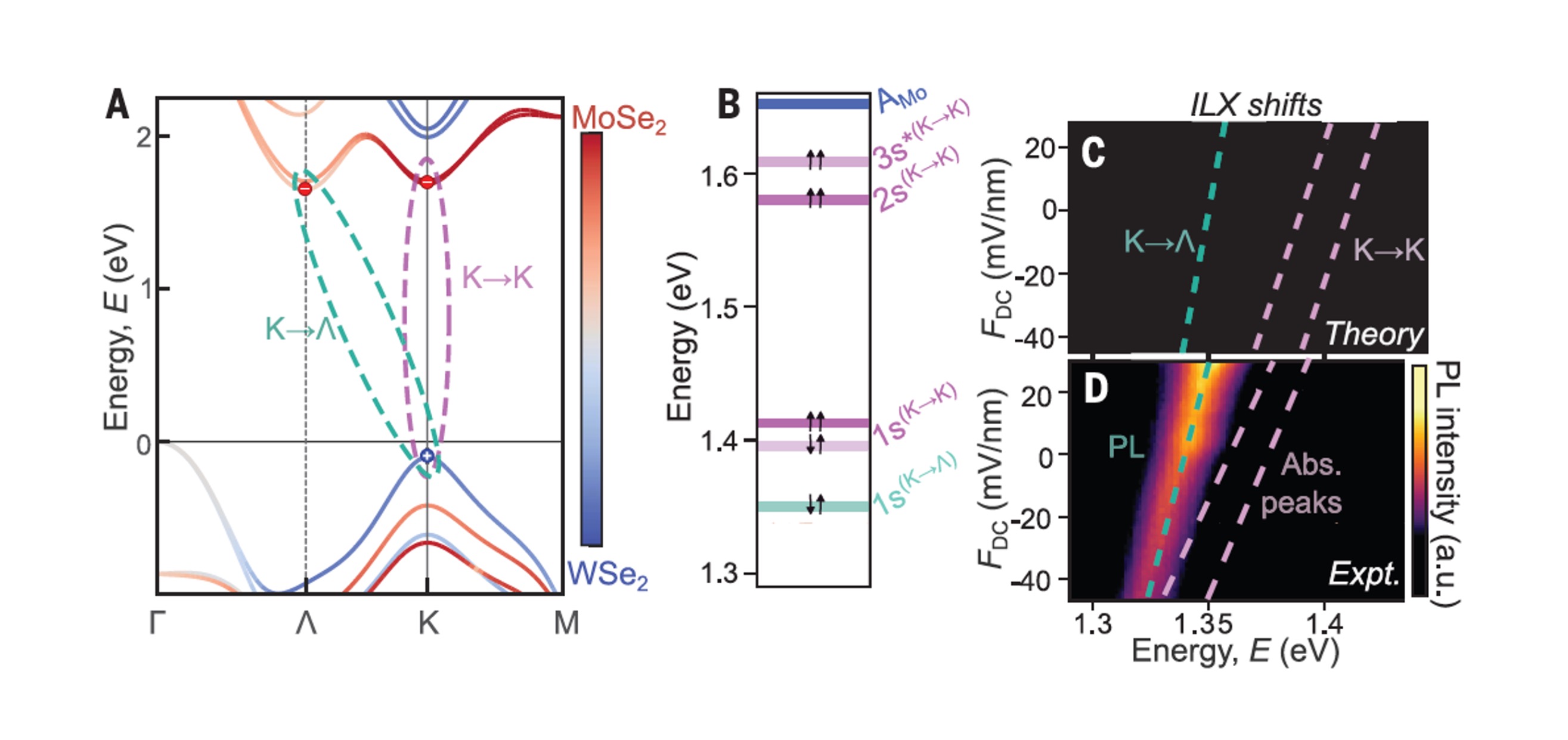One of our main research directions is the study of heterostructures, where the excitonic nature varies due to an interface composition. We explore the effect of a dielectric substrate on exciton properties and dynamics in various types of heterostructures, mainly in transition metal dichalcogenides (TMDs). In a recent collaboration with the Rapaport and Steinberg groups at the Hebrew University (Slobodkin et al., PRL 125 (2020)), we studied how a trilayer TMD heterostructure influences the exciton-exciton interaction nature. By connecting bandstructure theory with quantum-well approaches we suggested a phase transition between dipolar to quadrupolar interactions. In collaboration with the Heinz and da Jornada groups at Stanford University (Barré et al., Science 376 (2022)) we explored differences between absorption and emission interlayer excitons in TMD heterobilayers and the breaking of spin selection rules, expected to dominate exciton relaxation in these systems. We further analyzed the relation between twist angle and exciton spatial and spin properties, in collaboration with the Jain group at the Indian Institute of Science, Bangalore (Kundu et al., arxiv:2209.05030).

(A) Calculated GW band structure of the MoSe2 / WSe2 heterobilayer, with layer hybridization shown by color. (B) Calculated GW-BSE exciton resonances with momentum, spin, and Rydberg assignments. The opacity of the magenta lines (K→K) indicates relative oscillator strength. (C, D) Theoretically predicted and experimentally measured energies under external field for the K→L transition, shown in teal, and two lowest-energy, direct K→ K transitions, in magenta. Taken from Barré et al., Science 376, 406–410 (2022).


